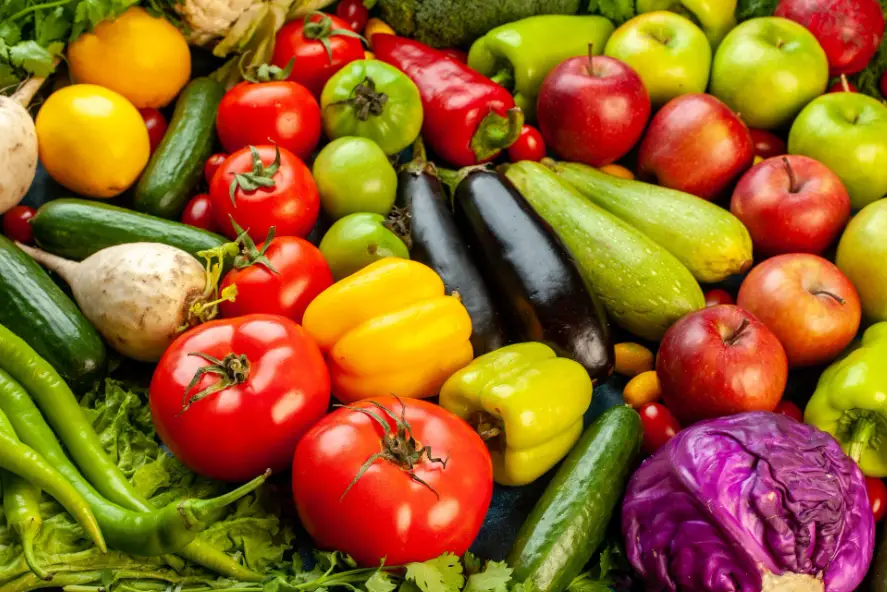Balanced blood sugar isn’t only a concern for people living with diabetes — it’s essential for everyone who wants stable energy, sharper focus, better mood, and long-term health. Glucose, the sugar your body uses for fuel, affects everything from brain function to hormone balance. When your levels rise and fall sharply, you can feel the difference: fatigue, cravings, irritability, and even anxiety often follow.
Fortunately, nutrition is one of the most powerful tools for balance. The foods you choose can help your body manage glucose naturally — smoothing out spikes, improving insulin response, and keeping energy levels consistent throughout the day. Below, we explore the best foods for steady blood sugar, why they work, and how to include them easily in your daily routine.
Why Blood Sugar Balance Matters
Every time you eat, carbohydrates in food are broken down into glucose, which enters your bloodstream. Your pancreas then releases insulin, a hormone that helps move that glucose into your cells for energy. When this system works efficiently, blood sugar levels rise and fall gradually.
However, frequent consumption of refined carbohydrates, sugary snacks, or processed foods can make blood sugar spike rapidly — followed by an equally sharp drop. Over time, this roller-coaster pattern can cause insulin resistance, fatigue, and weight gain, while increasing the risk for type 2 diabetes and heart disease.
Keeping blood sugar steady doesn’t mean avoiding carbohydrates altogether; it means choosing foods that slow digestion, provide fiber, protein, and healthy fats, and support the body’s natural rhythm.
1. Leafy Greens: Nature’s Gentle Regulators
Vegetables like spinach, kale, collard greens, and Swiss chard are powerhouses for glucose control. They’re low in carbohydrates but rich in magnesium, potassium, and fiber — all of which support insulin sensitivity.
Magnesium, in particular, helps the body use insulin more efficiently. People with lower magnesium levels are more likely to experience blood sugar fluctuations.
Try this: Blend spinach into smoothies, sauté kale with olive oil and garlic, or toss collards into soups and stews. Adding a handful of greens to each meal is one of the simplest habits for stable blood sugar.
2. Whole Grains: Slow, Steady Energy
Unlike refined grains (white bread, pasta, pastries), whole grains contain the entire grain kernel — including bran, germ, and endosperm — offering more fiber and nutrients. Fiber slows digestion, meaning glucose enters the bloodstream gradually.
Top picks include steel-cut oats, quinoa, barley, bulgur, and brown rice. These complex carbohydrates not only keep you full longer but also prevent the post-meal energy crash caused by fast-digesting carbs.
Try this: Swap breakfast cereals for oatmeal topped with berries and chia seeds. For lunch, choose quinoa or brown rice bowls paired with vegetables and lean proteins.
3. Legumes: The Perfect Protein-Fiber Duo
Beans, lentils, and chickpeas are some of the most blood sugar-friendly foods available. They contain complex carbohydrates that break down slowly and offer a mix of plant protein, soluble fiber, and resistant starch — a combination that supports steady energy release.
Studies have shown that people who consume legumes regularly tend to have lower fasting blood sugar and improved insulin sensitivity.
Try this: Add lentils to soups, make a chickpea salad with olive oil and lemon, or blend white beans into dips for a creamy, protein-rich snack.
4. Low-Sugar Fruits: Sweetness Without the Spike
Not all fruits are created equal when it comes to blood sugar. Berries, apples, pears, and citrus fruits offer sweetness along with fiber and antioxidants that help moderate glucose absorption.
Berries — strawberries, blueberries, raspberries, and blackberries — are especially beneficial because they’re lower in sugar and high in polyphenols, compounds that improve how the body processes sugar.
Try this: Add a handful of berries to yogurt or oatmeal, or blend them into a smoothie with unsweetened almond milk. Avoid fruit juices, which strip away fiber and cause quick spikes in blood sugar.
5. Nuts and Seeds: Smart Snacking for Stability
Nuts and seeds are small but mighty allies for blood sugar balance. Almonds, walnuts, pistachios, flaxseeds, and chia seeds are rich in healthy fats, protein, and fiber, all of which slow the absorption of sugar into the bloodstream.
They also contain magnesium and omega-3 fatty acids that reduce inflammation and support overall metabolic health.
Try this: Snack on a handful of mixed nuts between meals or sprinkle flax or chia seeds on salads, yogurt, or oatmeal.
Just remember to stick to moderate portions — nuts are calorie-dense, so about a small handful per serving is ideal.
6. Pumpkin and Sweet Potatoes: Gentle Carbs With a Bonus
Pumpkin, sweet potatoes, and other orange vegetables provide complex carbohydrates, beta-carotene, and soluble fiber that help slow sugar release.
Unlike refined carbs, these root vegetables digest gradually and keep insulin levels stable. Sweet potatoes, in particular, contain resistant starch when cooled after cooking — this acts like fiber and feeds beneficial gut bacteria, which also play a role in blood sugar regulation.
Try this: Roast cubed sweet potatoes with olive oil and cinnamon or make a pumpkin soup blended with coconut milk and turmeric for a warming, nutrient-rich meal.
7. Spices That Support Glucose Control
Certain spices not only add flavor but actively improve metabolic function. Cinnamon, turmeric, and ginger are standout examples.
-
Cinnamon has been shown to enhance insulin sensitivity and slow carbohydrate breakdown in the digestive tract.
-
Turmeric, rich in curcumin, reduces inflammation and helps stabilize fasting glucose.
-
Ginger aids digestion and improves nutrient absorption.
Try this: Add cinnamon to coffee or oatmeal, blend turmeric into smoothies, or sip ginger tea after meals. Small, consistent doses over time make a noticeable difference.
8. Healthy Fats: Fuel Without the Sugar
Healthy fats play a crucial role in steadying blood sugar. Foods like avocados, olive oil, and fatty fish (salmon, sardines, mackerel) slow digestion and keep you satisfied for hours.
Omega-3 fatty acids found in fish are particularly beneficial for reducing inflammation and improving insulin function.
Try this: Dress salads with extra virgin olive oil, snack on avocado toast with whole-grain bread, or enjoy grilled salmon twice a week.
9. Fermented Foods and Probiotics
Gut health and blood sugar are more connected than most people realize. Fermented foods such as Greek yogurt, kefir, sauerkraut, kimchi, and miso feed beneficial gut bacteria that influence metabolism and insulin response.
Research shows that people with diverse gut microbiomes handle glucose fluctuations better and experience fewer cravings.
Try this: Add a spoonful of sauerkraut as a side dish, or start your morning with plain Greek yogurt topped with nuts and berries.
10. Hydration and Herbal Support
Even the best diet won’t work without proper hydration. Dehydration can cause temporary spikes in blood sugar because it reduces the kidneys’ ability to flush out excess glucose.
Water, herbal teas, and mineral-rich broths keep your system balanced. Teas like green tea, hibiscus, and cinnamon tea also have mild glucose-lowering properties.
Try this: Drink a glass of water before every meal and sip green tea between meals for an antioxidant boost.
Additional Tips for Everyday Balance
-
Combine nutrients. Pair carbohydrates with protein or fat (for example, an apple with almonds) to slow glucose absorption.
-
Avoid skipping meals. Irregular eating can cause blood sugar dips followed by overeating.
-
Limit processed foods. Packaged snacks and refined grains cause sharp spikes that strain your metabolism.
-
Prioritize sleep and stress control. Lack of rest and chronic stress elevate cortisol, which can raise blood sugar even without food triggers.
-
Move after meals. A light walk for 10–15 minutes improves insulin sensitivity and helps your body use glucose efficiently.
The Bottom Line
Balancing blood sugar is not about strict dieting — it’s about making small, consistent choices that nourish both body and mind. Foods rich in fiber, healthy fats, protein, and antioxidants act as natural stabilizers, giving your body the tools it needs to maintain equilibrium.
Leafy greens, whole grains, legumes, nuts, seeds, and colorful vegetables form the cornerstone of a glucose-friendly lifestyle. Add in stress management, hydration, and regular movement, and your energy will stay even, your mood stable, and your health resilient.
A steady blood sugar level means more than avoiding fatigue or cravings — it’s about building a foundation for longevity, focus, and a vibrant life.

Adrian Hawthorne is a celebrated author and dedicated archivist who finds inspiration in the hidden stories of the past. Educated at Oxford, he now works at the National Archives, where preserving history fuels his evocative writing. Balancing archival precision with creative storytelling, Adrian founded the Hawthorne Institute of Literary Arts to mentor emerging writers and honor the timeless art of narrative.
